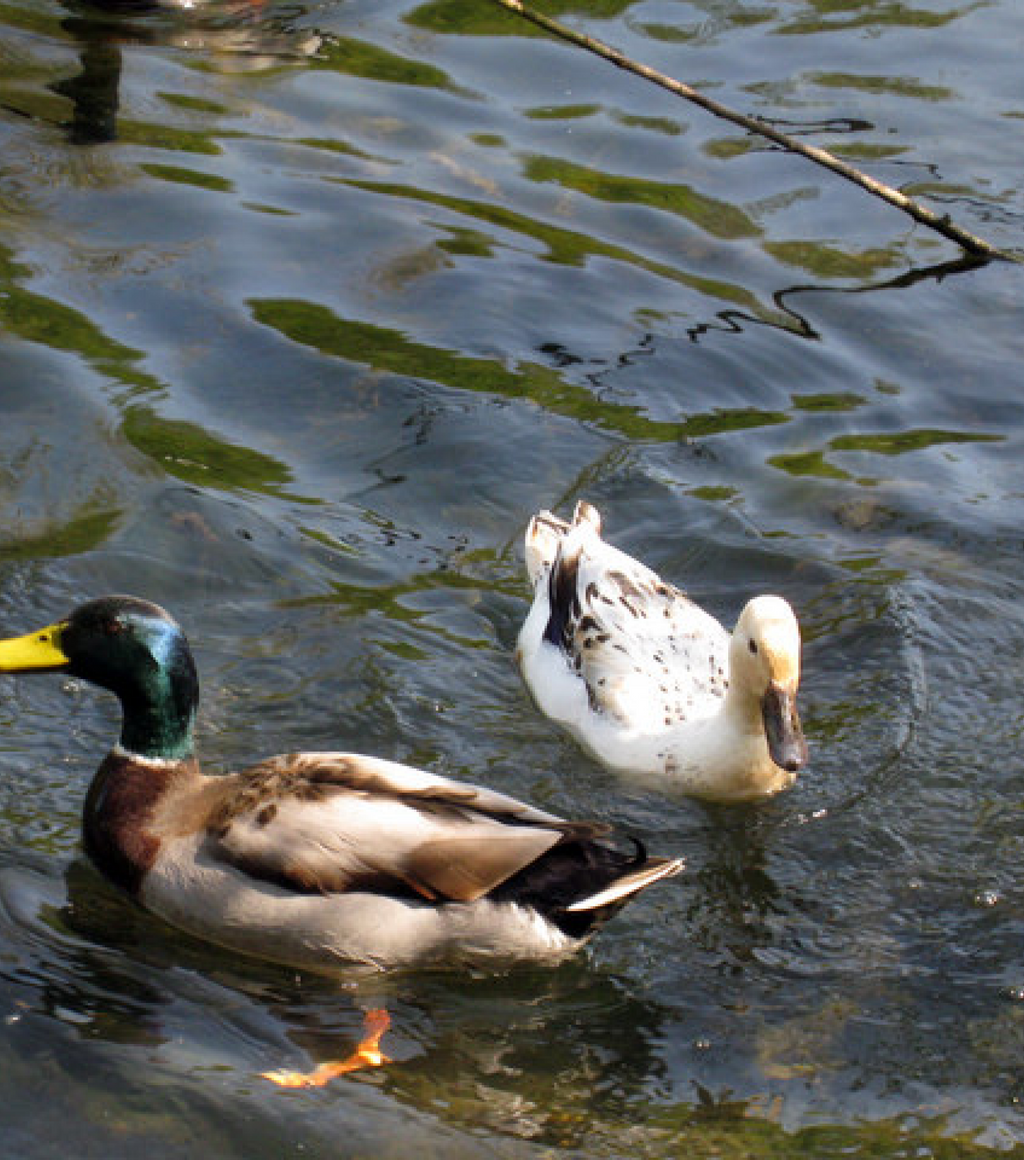
Silver Appleyard ducks are a well-regarded heritage breed known for their versatility, as they are prized for both meat and egg production. They are also favored by backyard enthusiasts for their striking appearance, friendly nature, and manageable size. Originating from England, the breed was developed in the 1940s by Reginald Appleyard, a keen breeder focused on creating a large, attractive, and practical duck. These ducks are well-suited to both farm environments and smaller
backyard setups.
- They are considered large, robust birds with a sturdy build
- The bill is also orange and flat
- Their plumage is predominantly silver with white accents
- Silver Appleyards possess a strong, deep chest
- They have orange legs and feet, contributing to their overall vibrant look.

BREED & ORIGIN
Silver Appleyard & Developed in England in the 1940s by a British farmer

LIFE EXPECTANCY
8-12 years

HEIGHT & WEIGHT
Drakes (males): 8-10 lbs (3.6-4.5 kg)
Ducks (females): 7-9 lbs (3.2-4 kg)

Duckling: 0-6 weeks

Juvenile: 8-12 weeks

Adult: 16+ weeks
LOW
MEDIUM
HIGH
Temperament
Calm, friendly, good with other animals and humans, excellent foragers
Activity Level
High; enjoy foraging and require space to roam
Climate Tolerance
Adaptable to various climates but require protection from extreme cold and heat
Genetic Traits
Good growth rate, excellent foragers, and prolific egg layers
Egg Laying Capacity
High, 220-265 eggs per year
Broodiness
Occasional broodiness; artificial incubation often preferred for optimal hatching

Feeding
Provide a balanced duck feed, supplemented with greens, grains, and occasional treats like insects. Access to clean, fresh water is essential.

Housing
Silver Appleyard ducks need secure, predator-proof shelters with dry bedding and ventilation. They enjoy outdoor space for roaming and foraging.

Health
These ducks are hardy but benefit from a clean environment to prevent infections. Regular health checks and secure housing help keep them safe from predators and diseases.

Breeding Practices
Silver Appleyard ducks are relatively easy to breed and raise. They are known for their rapid growth, making them excellent meat birds, but they are also suitable for egg production. They are generally good mothers, though artificial incubation is often used to ensure better hatching rates. These ducks thrive best when raised in a natural environment with access to clean water and fresh pasture
for foraging.
Nutritional Needs
Ducklings need a high-protein diet during their growth phase, while adult Silver Appleyard Duck thrive on a balanced diet rich in grains, greens, and protein.
Flygrubs provide essential protein and calcium, supporting egg production. It complement their diet, providing high protein, healthy fats, calcium, and phosphorus and can be integrated into the diet from ducklings to adulthood. Easy to incorporate, can be fed
dried or rehydrated.

The Silver Appleyard duck is valued economically for its high-quality meat and egg production, while culturally cherished for its friendly nature and contribution to sustainable farming practices.
Category |
Details |
|---|---|
Breed |
Silver Appleyard |
Origin |
England, developed by Reginald Appleyard in the 1940s |
Temperament |
Calm, friendly, good with other animals and humans, excellent foragers |
Comb Type |
None (ducks do not have combs, but Silver Appleyards have pale orange bills) |
Commercial Use |
Known for both meat and egg production, with a good feed-to-egg conversion rate |
Climate Tolerance |
Adaptable to various climates but require protection from extreme cold and heat |
Feeding |
Balanced diet of grains, greens, and protein-rich feed, supplemented with Fly Grubs for additional nutrients |
Breed Standards |
Recognized by various poultry organizations for exhibition and backyard use |
Backyard Use |
Popular among backyard enthusiasts due to their manageable size, egg-laying capacity, and friendly nature |
Egg Laying |
220-265 eggs per year |
Housing Requirements |
Need dry, draft-free housing with access to fresh water and pasture; 3-4 square feet per duck indoors |
Activity Level |
High; enjoy foraging and require space to roam |
Genetic Traits |
Good growth rate, excellent foragers, and prolific egg layers |
Market Value |
Ducklings: $8-$12 each; adults depend on demand and quality |
Fly Grubs Benefits |
High protein and calcium, supports robust egg production and healthy growth |
- High egg production: Lays 220-265 eggs per year.
- Friendly nature: Calm and family-friendly.
- Dual-purpose: Good for both meat and egg production.
- Adaptable: Thrives in various climates and setups.
- Attractive plumage: Unique silver and white feathers add charm.
- Limited broodiness: Often needs artificial incubation.
- Space needs: Requires ample roaming space.
- Water requirements: Needs access to clean water for health.
- Health risks: Prone to bumblefoot and respiratory issues if poorly cared for.

Yes, Silver Appleyard ducks make excellent pets due to their calm and friendly nature. They are easy to manage, especially for beginner duck owners, and enjoy human interaction. Their sociable temperament makes them a delightful addition to backyard flocks.